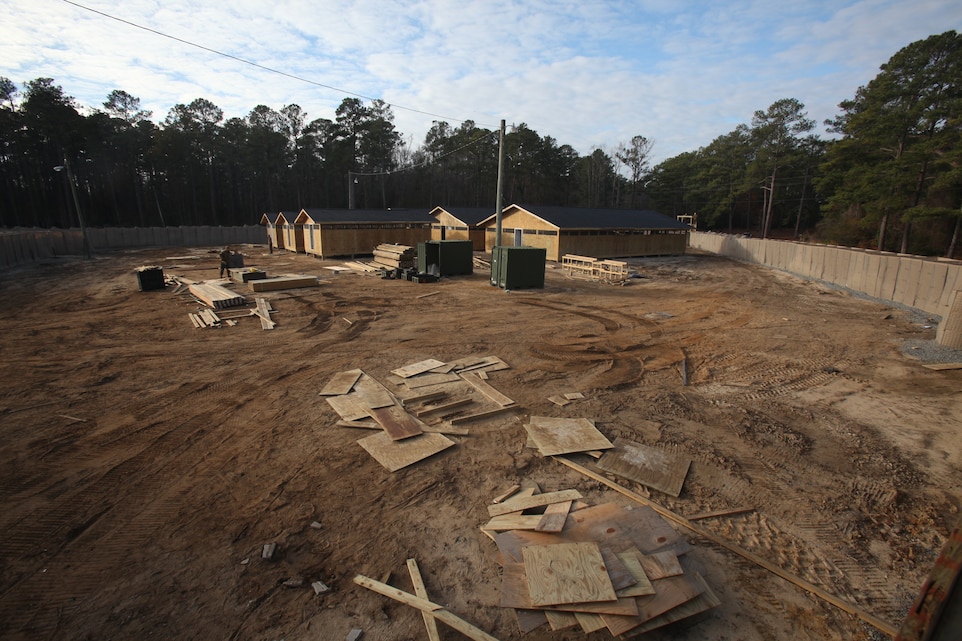MCT provides combat training for non-infantry Marines. At the conclusion of the 29 day training cycle, the students conduct a “Three Day War” during which they practice most of the skills they learned and operate from a combat base.
“This is going to enable the Marines to immerse themselves in the environment of being in a FOB as part of their final exercise at MCT,” said 1st Lt. James P. Heg, a combat engineer platoon commander for MWSS-271. “With HESCO barriers, (sand-filled barriers), around them they can’t see over it because its seven feet high, so they’re going to be able to get into that combat mindset.
“They’ll enter the FOB and be able to conduct training, plan patrols; they’ll be able to actually live as though they’re living in a forward operating base in country. It’ll add that ‘train as you fight’ mentality to everything that they do.”
The project not only provides better training facilities for students at MCT, but also provides valuable experience for the support squadron.
“This has an enormous amount of training value for my Marines,” Heg said. “Each and every one of these Marines at some point is going to put up HESCO, build a guard tower, build a hut.
“What this has done for us is given us a two-way street opportunity to not only train our Marines but also give SOI East that awesome capability of keeping their training realistic.”
All Marines are riflemen, and MCT is one of the places Marines go to learn their trade.
“For every Marine out there, learning these skills are common training, they’re common skills for the basic rifleman,” said Gunnery Sgt. Scott J. Burns, the MCT logistics chief. “MCT enhances what they learned a little bit at boot camp, and they come out here and learn what they’re going to need if they go into combat.”
